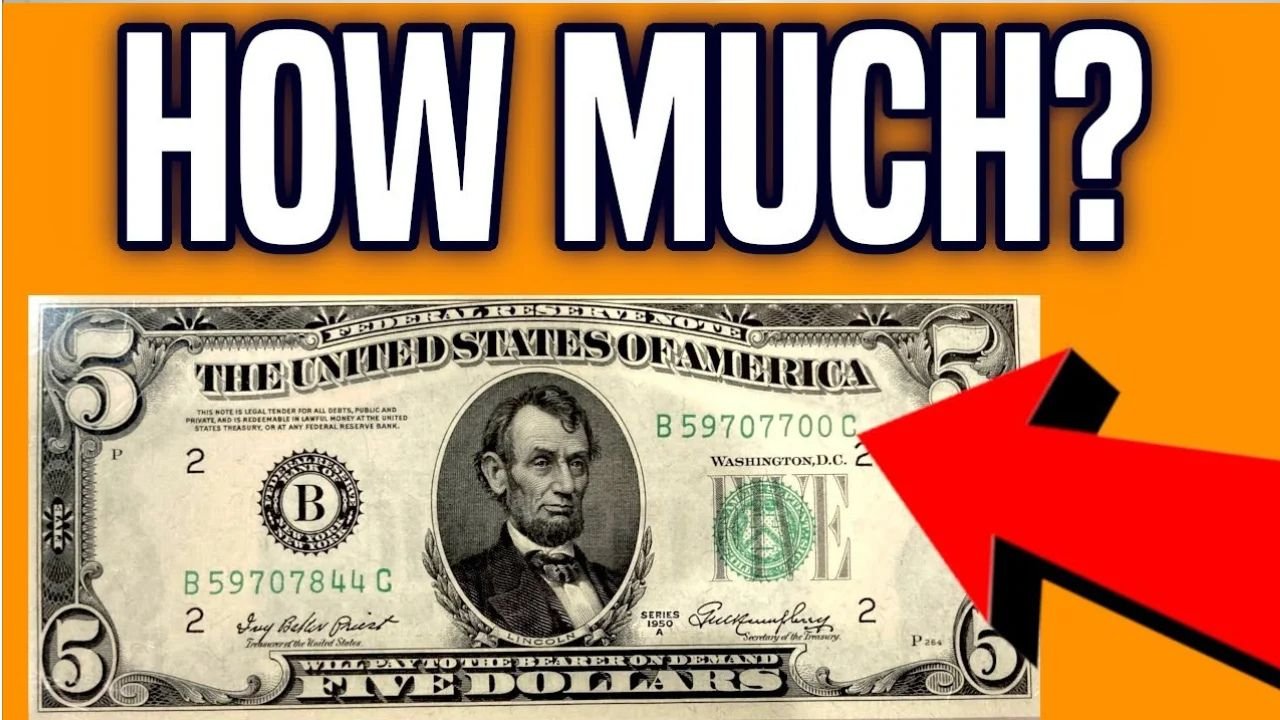Check the Money in Your Pocket: Have you ever wondered if the money sitting in your wallet could be worth more than its printed value? Well, you might want to take a closer look at your $5 bills—especially the ones from 1995. Some rare versions of this bill come with an unusual error: an upside-down seal. It might look like a printing mistake, and that’s exactly what makes it special.
What Is a 1995 $5 Bill With an Upside-Down Seal?
Let’s start with what this actually means. A 1995 $5 bill with an upside-down seal has a printing error where the Department of the Treasury seal—the green circular symbol on the front—is flipped upside down. This isn’t how the bill is supposed to be printed, and because it’s rare, collectors are willing to pay extra for it.
Why Do Printing Errors Happen on Money?
Even though U.S. currency goes through a very careful printing process, mistakes still happen. These bills are printed in large batches using big machines. Sometimes, the paper shifts or the plates don’t align correctly. When this happens, seals, serial numbers, or even images might get printed in the wrong place or at the wrong angle. That’s how errors like the upside-down seal occur.
How Rare Is This Kind of Error?
Bills with upside-down seals are very rare. Not every 1995 $5 bill has this error, so you won’t see it often. Collectors are always on the lookout for these types of mistakes because they’re unusual. The fewer there are in circulation, the more valuable they become. Think of it like finding a rare coin—only this time, it’s paper money.
How Can You Spot One?
To find out if you have a 1995 $5 bill with an upside-down seal, hold the bill in your hand and look closely at the green seal on the right side. That seal should be upright and level. If it’s flipped completely upside down—so the text or image is rotated 180 degrees—that’s a sign you might have a valuable error bill. Make sure the bill is from the year 1995 and hasn’t been altered or damaged in a way that could confuse the seal’s position.
What Is It Worth Today?
The value of a 1995 $5 bill with an upside-down seal depends on its condition and how clear the error is. If the bill is clean, crisp, and the error is obvious, it can sell for much more than face value. Some collectors have paid over $100 or even more for a single bill. Of course, the final price depends on what buyers are willing to pay.
Can You Still Use It?
Yes, absolutely. Even if the seal is upside down, the bill is still legal U.S. currency. You can spend it like any other five-dollar bill. But if you think it might be rare, it’s probably better to keep it safe and have it looked at by a collector or currency expert.
Comparison Table: Normal vs. Error $5 Bill
Here’s a simple way to compare a regular 1995 $5 bill with one that has the upside-down seal:
| Feature | Normal $5 Bill (1995) | Upside-Down Seal $5 Bill |
|---|---|---|
| Green Treasury Seal | Upright position | Flipped upside down |
| Value | $5 face value | $50 to $200+ (varies) |
| Rarity | Very common | Very rare |
| Collectible? | Not collectible | Highly collectible |
Final Thoughts
If you have some old $5 bills lying around, it’s worth checking the details. That simple green seal could turn your ordinary five bucks into something worth far more. Always check the date, the seal’s position, and the overall condition of the bill. You never know—you might be holding a hidden treasure in your hand.
FAQs
Q: Can any $5 bill have an upside-down seal?
No, this error is mostly found on certain bills, like those printed in 1995. It’s not something you’ll see on most $5 bills.
Q: How do I know if the seal is truly upside down?
Compare it with another regular $5 bill. If the seal is rotated 180 degrees, that’s a good sign it might be the rare version.
Q: Where can I sell it if I find one?
You can sell it to collectors, on online auction sites, or through currency dealers. Make sure to get it checked by a professional first.
Q: Does writing or damage affect the value?
Yes, damage or markings can lower the bill’s value. Collectors prefer clean, well-preserved notes.




